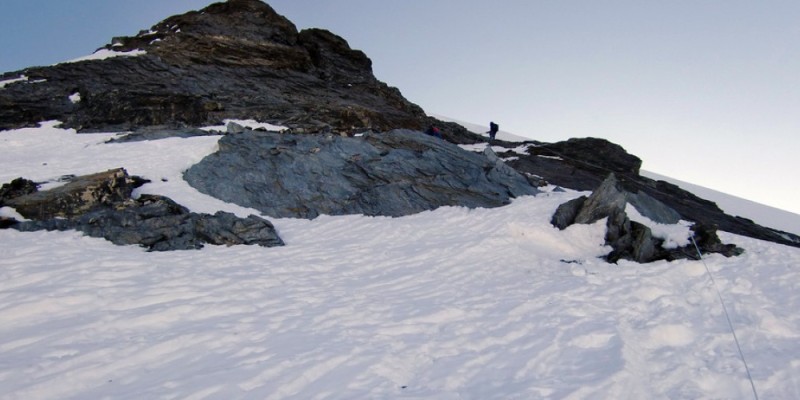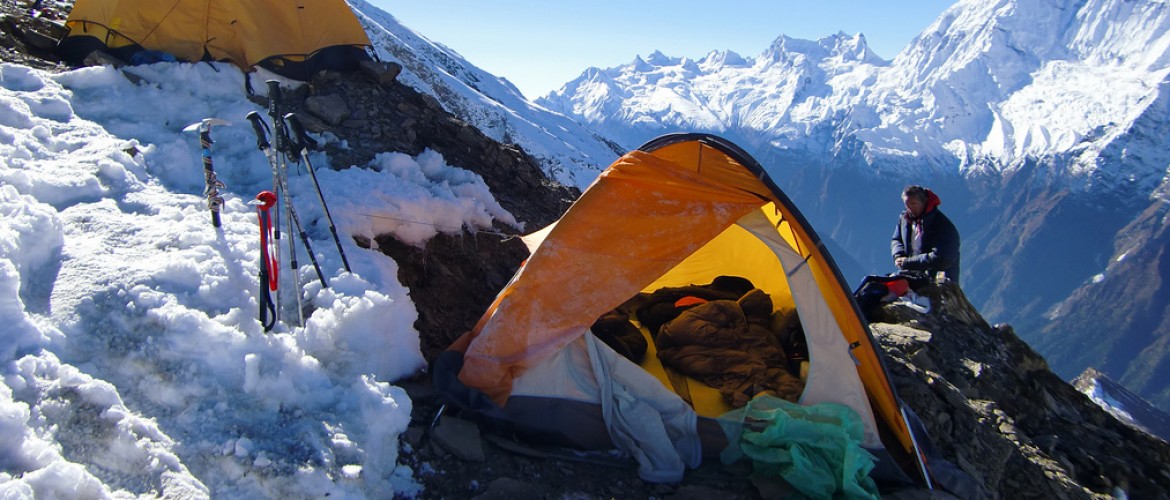
All You Need to Know about Pisang Peak Climbing

Pisang Peak is an interesting pyramidal trekking peak standing 6091 meters above the sea level. It is one of the popular trekking peaks, situated on the Annapurna Circuit in Manang district. Pisang Peak climbing is a famous adventure activity in Nepal for both experienced and novice trekkers. The peak climbing combined with Annapurna Circuit trek allows you to experience the natural and cultural beauty of the Annapurna region including the variety of landscape, vegetation, climate, flora, fauna, villages, centuries-old monasteries and culture. The highlight of the trip is the majestic views of the Annapurna range and the Manang Valley from the summit.
Pisang Peak Climbing Itinerary:
Day 01: Arrival in Kathmandu
Day 02: Guided city tours of Kathmandu
Day 03: Drive to Chame (2670m) – 6/7hrs
Day 04: Trek to Pisang (3300m) – 5/6hrs
Day 05: Trek to Upper Pisang (3810m) – 1 hr
Day 06: Rest Day
Day 07: Trek to Pisang Peak Base Camp (4380m) – 3/4 hrs
Day 08: Trek to Pisang Peak High Camp (5400m) – 4/5hrs
Day 09: Summit Pisang Peak (6091m) and Hike back to Upper Pisang – 8/9hrs
Day 10: Trek to Manang (3500m)
Day 11: Rest day
Day 12: Trek to Yak Kharka (4110m) – 3/4 hrs
Day 13: Trek to Thorong Phedi(4450m) – 3/4 hrs
Day 14: Trek to Muktinath (3800m) via Thorong la (5416m) – 7/8hrs
Day 15: Trek to Jomsom (2800m) – 5/6 hrs
Day 16: Fly to Kathmandu via Pokhara – 1.5 hrs
Day 17: Departure from Kathmandu
Best season to climb Pisang Peak
Peak climbing in different seasons offers different experience, but there are two best seasons to summit Pisang Peak. Similar to other peak climbing and trekking, autumn (Mid-September, October and November) and spring (March, April, May) are considered as the best seasons. Autumn is a fabulous season as the sky is clear, and trails are excellent with the best visibility. Also the temperature in the highland is mild and perfect for peak climbing. And another wonderful season for peak climbing is spring. This season offers the flower paved trial as rhododendrons bloom along the route during this time. The trails are in good condition and the sky’s also clear with best visibility.
Pisang Peak Permit
Climbing Pisang Peak requires special permits. They are:
Pisang Peak Climbing Permit: Climbing any peak over 5000m requires climbing permit from Nepal Mountaineering Association (NMA). The price for the permit may range from USD 70 per person to USD 250 per person according to the season.
Annapurna Conservation Area Permit: Since Pisang peak lies in the Annapurna region, you need Annapurna Conservation Area Entry Permit. The cost of the Annapurna Conservation Area Entry Permit is around USD 30per person for foreigners and USD 10 per person for SAARC nationals.
TIMS card: And the last permit required for climbing the peak is Trekkers Information Management System permit. This permit costs around USD 10 to 20 according to the number of the travelers.
Guide and Porters
Pisang Peak is a moderate level peak with some technical sections. So it’s always better to have an experienced and qualified trekking guide with you for the proper guidance and safety in the technical section. In fact, guide is legally mandatory for any peak climbing in Nepal. Along with proper guidance, guides also help you find good food, secure accommodation in the remote areas and keep you entertained with the stories related to the region. And the porters help you with the luggage. Together they make your journey safe, memorable and stress free.
Accommodation, Food and Water
As Annapurna region is a popular trekking region, accommodation is easily available. There are many teahouses along the trail offering basic facilities. During this trip, you will be accommodating in the teahouses during the trek and tented camps while climbing Pisang Peak.
As for the meal and drinking water, you will be provided with hygienic full board meal and fresh drinking water. During the trek you will have wide varieties of the food ranging from Nepalese foods (Dal Bhat), Tibetan fried bread, various soups, Momos (steamed dumplings), potatoes to pastas and even a version of pizza. And during the climb you will be provided with freshly cooked food by the cook and 3L of boiled drinking water per day.
Communication
Communication is not quite a problem in Annapurna region. Both the Ncell and NTC network are available but in might be unstable at some points and in the higher altitudes. You can even get the Wi-Fi service by paying certain charge. But during camping in higher altitude, you might not have the network. So if communication is important, then you better get a rental satellite phone.
Electricity
Electricity is available at the teahouses and lodges during Pisang Peak trek. At the lower altitude, electricity is not a problem at all and you can easily charge your gadgets and devices. But at higher altitude, the electricity is generated through solar panels. You can charge your devices but they will charge you certain amount. So, it’s better to carry your power bank in case of emergency.
Clothes and gear
Proper clothing and gear are essential during trekking. Since you will be trekking into the higher altitude, you will need warm clothes and some of the items like sun cream, lip balm hat/ caps and many more to be added into your packing list. You will also need hiking boots, trekking poles, sleeping bags etc. If you are tight on budget then you can even rent the gears from the shops in Kathmandu. The list of the essential cloths and gears required during Pisang Peak climbing are:
Difficulty level
The trekking trails in Nepal are not always easy, you transverse through wide varieties of landform, even in a single trip. In Pisang Peak climbing also, you begin from the low altitude with pretty easy walking trail and gradually ascend till you meet the Alpine vegetation, which is quite challenging. As the altitude rises, the walking gets difficult. While walking in the mountain region, along with the extreme fitness, you also require strong mindset. Pisang Peak entails a number of challenges including altitude sickness, route problem, temperature, weather and lodging. These challenges can be easily overcome with a proper plan and with the help of your guide.